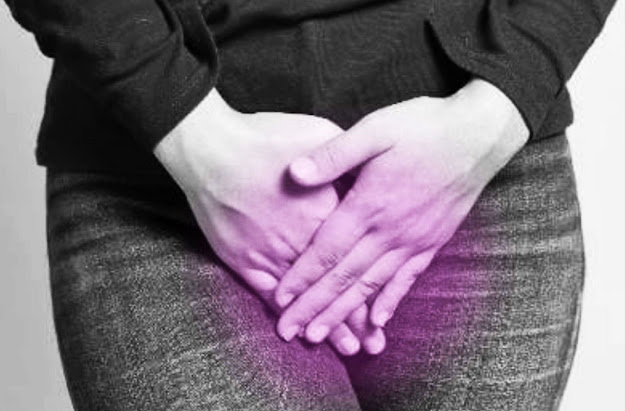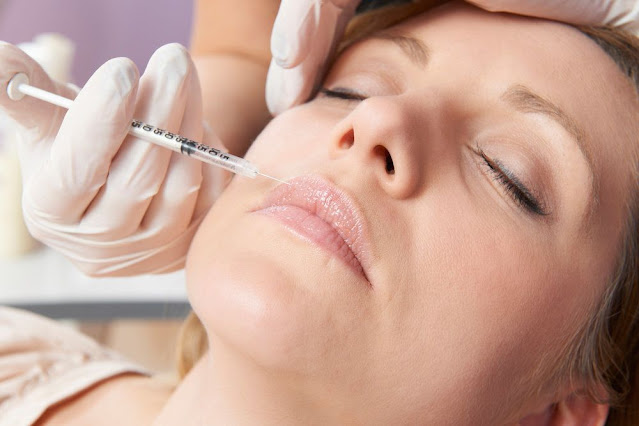How Does Vulvodynia Affect Women's Sexual Health?
Vulvodynia literally means 'pain in the vulva.' Vulvodynia describes a symptom, which can have many different causes. Women who have it often describe vulvodynia as a burning or shooting pain throughout the vulva. This condition is closely related to a condition called vulvar vestibulitis, where women experience pain around the opening of the vagina. Both of these conditions will be discussed in this Health Centre.
There are no studies that clearly tell us how common this condition is. Some estimates suggest that up to 15 percent of women experience some symptoms. Women can experience this condition throughout the lifecycle, but it is most commonly a disease of women in their reproductive years. Many never seek treatment.
Experts used to believe that sexual abuse was the primary cause of vulvodynia and that vulvodynia was a psychological condition, not a physical one. While some women with vulvodynia have experienced abuse, studies have now shown that a history of sexual abuse is not more common among women with this condition. Sexual abuse is no longer considered the cause of vulvodynia, although a past experience of abuse may influence a woman's attitudes about her body and the course of her treatment.
Vulvodynia is not "just in your head," but it can influence many aspects of your life beyond the purely physical. Vulvodynia often limits a woman's sexual experiences and can adversely affect her relationships. Some studies have also suggested that depression is more common among women with vulvodynia
A woman's external genitals are called the vulva. This includes the mons, labia and clitoris, as well as the vaginal and urethral openings and the entryway to the vagina, called the vestibule.
Women with vulvodynia experience chronic vulvar pain. They may feel shooting pain, itching, stinging, rawness, throbbing and/or burning throughout this area, or the pain may only be in specific areas or "tender points." Some women experience constant pain, while others have cycles of pain, which may be linked to their menstrual cycles. Some women may have pain with pressure or sexual contact. The skin of the vulva may look normal or there may be red patches especially with touch or pressure.
Localized vulvodynia is a condition in which pain occurs in a horseshoe-shaped area of the vaginal vestibule. This area is located on the lower side of the vaginal opening furthest from the clitoris (see diagram). The pain is generally focused in specific spots. Women with localized vulvodynia are less likely to have constant pain; their pain is more often a response when the area is touched. This condition is called provoked localized vulvodynia.
PLV and vulvodynia are sometimes described as being either primary or secondary. Primary disease refers to pain that begins when a woman first has sex or tries to insert a tampon. Secondary disease is pain that occurs after a number of years of pain-free intercourse. Some women can link the development of secondary vulvodynia/PLV with a specific event, such as an injury or an infection. This information may be helpful to your doctor when deciding on the best treatment for you.
Diagnosis:
Women with vulvodynia may have to go see several doctors before they find one who is familiar with treating this condition.
Vulvodynia is diagnosed by eliminating other possible causes of vulvar pain. It is important to identify the cause of the pain to determine the best treatment for you.
During your initial visit, your doctor will likely ask questions about your condition and do a physical exam.
Discussing your symptoms | A physical exam | Diagnostic tests | Specialists
Discussing Your Symptoms:
One of the best sources of information about your condition is you. Your doctor should be interested in:
● when your symptoms began
● what activities trigger pain
● where and how you experience pain
● other illnesses you have or symptoms or pain you experience
● your history of using antibiotics and other medications
● any accidents or surgery which may have damaged the nerves in your pelvic region
● any skin sensitivities or conditions
● any bladder or bowel symptoms
A Physical Exam:
The doctor will do a thorough physical exam of your vulva, looking for swollen glands, irritation and sores. She or he will look for signs of genital infection, such as:
● Molluscum contagiosum
● Herpes
● Human papillomavirus (HPV)
● Yeast infection
Swabs of the vulva will be sent to a laboratory and tested for signs of infection.
Your doctor will also look for signs of skin conditions, such as lichen sclerosus or contact dermatitis. If there is evidence of a skin condition, you will likely be referred to a dermatologist.
The doctor will touch various areas of your vulva with a swab. This is to identify sensitive areas and test your reflexes, which can help identify nerve or muscle damage.
If your condition allows, your doctor may also do an internal exam, looking for tender areas and signs of infection, for signs of pelvic prolapse and weak points in the pelvic muscles.
Diagnostic Tests:
When the results of your initial visit are available, your doctor will likely suggest some followup tests, to learn more about your condition. You should discuss the particulars of your situation with your doctor and decide together whether these tests would provide insights into your condition.
Colposcopy:
A colposcope is a microscope-like device used to magnify and examine the cervix, vagina and vulva. It does not come into contact with your body. When a colposcopy is done, the area is washed with acetic acid (vinegar) to make abnormal cells more obvious. Genital warts and other infected areas turn white when exposed to vinegar. During a colposcopy, a biopsy and tests for HPV can also be done. A colposcopy can also be used to identify other viral infections, skin conditions and, in the rare cases when it occurs, vulvar cancer.
Hormone Testing:
If indicated, your doctor may order blood tests to determine your levels of estrogen, progesterone and testosterone. Although the relationship between these hormones and vulvar pain is not entirely clear, many women find that their pain fluctuates in relation to their menstrual cycles. Hormonal tests will also rule out the possibility of early menopause, which may cause pain due to dryness and the thinning of vaginal tissue.
Tests for Autoimmune Disorders:
Vulvar vestibulitis syndrome and vulvodynia occur more frequently in women with two autoimmune conditions, Sjogren's Syndrome and lupus erythematosus. Fibromyalgia, which many researchers also believe is an autoimmune disease, may also be associated with vulvodynia and VVS. Your physician may suggest you be tested for these as well.
Oxalate Levels:
One possible explanation for some cases of vulvodynia is a build-up of oxalate in a woman's system. This is a controversial theory, championed primarily by those outside the conventional medical system. It attributes vulvar pain to a build-up of oxalate crystals in the affected tissues. Oxalates are found in many fruits and vegetables. High concentrations of oxalate have been found in the urine of women with vulvodynia; however, it is unclear how many women without vulvodynia also have high oxalate levels.
Neuropathic Pain:
If no other specific cause is found the most common cause is “neuropathic pain”. This means that nerve fibres in the area are acting as if they were pain fibres interpreting touch or pressure as pain. Neuropathic pain typically has a burning quality.
Vestibulodynia often leads to spasms in the pelvic floor which can affect the vagina (vaginismus) and may be associated with bladder or bowel complaints.
Specialists:
Your doctor may refer you to a specialist for further investigation or treatment:
A gynecologist:
Your doctor will likely refer you to a gynecologist. It is important to see one who has experience treating women with vulvodynia.
A dermatologist:
If your pain appears to be caused by skin irritation or an identifiable skin condition, your doctor will suggest that you visit a dermatologist. Many dermatologists also do allergy testing and can determine if an allergic reaction is contributing to your condition.
An allergist or environmental health specialist:
Your doctor may suggest you visit a specialist to be tested for food and other allergies or for chemical sensitivities. Some women believe that this is the cause of these symptoms and have experienced relief by changing their diet, avoiding certain chemicals, or by having desensitization treatments.
A physiotherapist:
If your pain appears to be caused by the nerves in your pelvis or by pelvic muscle tension or spasms, your doctor may refer you to a physiotherapist. A physiotherapist can help identify what is causing the problem, and teach you exercises, biofeedback or other techniques, to help relieve your pain.
A chronic pain specialist:
If your doctor cannot determine and relieve the underlying cause of your pain, or if your pain is due to a problem with the nerves, you may be referred to a chronic pain specialist. Chronic pain specialists are experts in using medications and other methods, such as relaxation techniques, to help you deal with chronic pain.
Treatment:
There are many approaches to treating vulvodynia and vulvar vestibulitis syndrome, but there is no single cure that is suitable for everyone. You and your doctor will likely have to take a trial and error approach to finding the right treatment. The results of your diagnostic tests will help determine what strategies are right for you.
Here are some of the approaches currently used to treat vulvodynia:
Topical creams | Oral medications | Physical therapies |
Dietary restrictions and nutritional supplements | Surgery
Topical Creams:
Various topical creams are used to relieve a woman’s symptoms. Hormone creams may also help treat the underlying problem. Creams generally have few side effects and are relatively inexpensive. Several different types may be used:
● anti-inflammatory creams
● anesthetic creams
● topical hormones
Anti-Inflammatory Creams:
If your vulva is swollen, irritated or in pain, an anti-inflammatory cream may help. This will not relieve the underlying cause of your pain, but it may reduce your symptoms. The most common type of cream is a zinc oxide cream, commonly used to treat diaper rash.
Anesthetic Creams:
Anesthetic creams numb the area and are most often recommended for women with vulvar vestibulitis to use immediately before sexual activity. If the cream is used only in the area immediately around the vaginal opening and not near the clitoris, the cream may effectively numb the pain without unduly limiting sensation. (Your sexual partner may also experience temporary numbness after sexual contact. Male partners might want to wear a condom.) Anesthetic creams can help reduce pain by reducing the stimulation of pain centres.
Topical Hormones:
Post-menopausal women often use estrogen creams to prevent drying and thinning of the vaginal tissue. Women with vulvodynia can also apply this cream to the external genitals, to help thicken fragile tissue and increase blood flow in the area. A side effect of this treatment may be itchiness for the first four to six weeks of use.
Some women have also experienced relief using topical testosterone or progesterone creams. This is most clearly documented in women who have skin conditions, such as lichen sclerosus, but it may be effective for other women as well.
Oral Medications:
Oral medications can be useful for treating vulvodynia and vulvar vestibulitis syndrome in the following situations:
● when the pain is due to nerve damage
● when the pain is due to an infection
● when a woman needs pain relief and no other approach has been successful
Drugs to Treat Nerve Damage:
Two types of drugs are used to treat nerve pain:
● anticonvulsant drugs
● antidepressants
Although originally developed to treat epilepsy, anticonvulsant drugs are now used in a number of situations where nerve damage causes pain. The drugs may relieve pain by making the nerves less sensitive to stimulation. These drugs are also used to treat nerve damage in people with diabetes.
Tricyclic antidepressants work by limiting the pain signals that damaged nerves send to the brain. They are an older class of antidepressants, which have more side effects than new antidepressants, such as Prozac; however, they appear to be more effective at treating vulvodynia. You are not being prescribed an antidepressant because the doctor thinks your condition is 'in your head.' These drugs modify how signals from the nerves are received.
Drugs to Fight Infection:
Viral infections, such as the human papillomavirus (HPV), an overgrowth of bacteria and yeast infections under the skin, are all possible causes of vulvodynia. Depending on your circumstances, your doctor may prescribe drugs to treat these infections. This approach should be used with caution. For example, antibiotics that kill bacteria may actually make a yeast infection worse by killing off friendly bacteria that limit the growth of yeast.
Pain Relief Medication:
If no underlying cause can be identified for your vulvodynia, one approach is to just treat the pain. Pain relief medication is best prescribed by a chronic pain specialist, if one is available to you. See our chronic pelvic pain pages for details.
Physical Therapies:
A number of physical therapies may be helpful for women with vulvodynia. The most promising of these appears to be biofeedback.
Biofeedback Techniques:
Biofeedback training for vulvodynia helps patients to strengthen and relax the muscles of the pelvic floor, which can result in reduced pain. The biofeedback approach is based on the idea that women with vulvodynia and vulvar vestibulitis syndrome have unstable muscles in the walls of the pelvis. This may explain the shooting and stabbing pains often described by women with vulvodynia, as well as pain that results from touch and stimulation. Biofeedback is based on the idea that these muscle problems may have developed in response to nerve damage and strain to the muscles. Biofeedback is used to teach people how to exercise and relax specific muscles.
Biofeedback manufacturers have developed software specifically for women with vulvodynia and special sensors, which are inserted into the vagina. (Regular biofeedback units use electrodes placed on the skin.)
Acupuncture:
Some women have had their symptoms relieved with acupuncture. Most reports suggest that acupuncture offers temporary relief, not a long-term cure. Regulations governing the practice of acupuncture vary from province to province, and acupuncture remains unregulated in many provinces. Contact the Chinese Medicine and Acupuncture Association of Canada or the Canadian Association of Naturopathic Doctors for help finding a well-trained and reputable acupuncturist.
Other potentially useful therapies include the use of TENS units (mechanical units which use electrical impulses to control pain) and targeted exercises. TENS units are also used to treat chronic pelvic pain and are discussed in more depth in that section. A physiotherapist may be able to advise you about both of these approaches.
Dietary Restrictions and Nutrition Supplements:
Some believe that vulvodynia is caused by a build-up of oxalate crystals under the skin. Foods high in oxalates include leafy green vegetables, beets, rhubarb, strawberries, nuts, seeds, wheat bran and chocolate. No successful studies on this approach have been published in the medical literature. However, some women have reported benefits from the low oxalate diet and nutritional supplements he suggests. Talk to your health-care provider about the pros and cons of reducing or eliminating high-oxalate foods from your diet.
Surgery:
Surgery should be considered as a last resort for the treatment of severe vulvar vestibulitis syndrome (VVS). It is not appropriate for women with vulvodynia whose pain occurs throughout the vulva.
Surgery for VVS involves the complete removal of both the major and minor vestibular glands. In some cases, a skin graft to the vestibular area may also be necessary.
When a competent and knowledgeable surgeon performs the surgery, this treatment eventually allows 60 to 75 percent of women to participate in pain-free intercourse. Recovery from surgery is lengthy, typically taking six to eight weeks.
Laser Surgery:
Some physicians have used laser surgery for women with vulvodynia and VVS. This treatment has not proven to be effective, and many women who tried laser surgery saw their symptoms worsen. In 1997, the National Institute of Health in the United States hosted the first symposium of health-care professionals specializing in treating vulvodynia and VVS. One of the recommendations of this gathering was that laser therapy NOT be used to treat vulvodynia or VVS.




Comments
Post a Comment